How To Get The Perfect Lawn - Beginners Guide To Gardening
- By Monster Group (UK)
- 1 May 2020
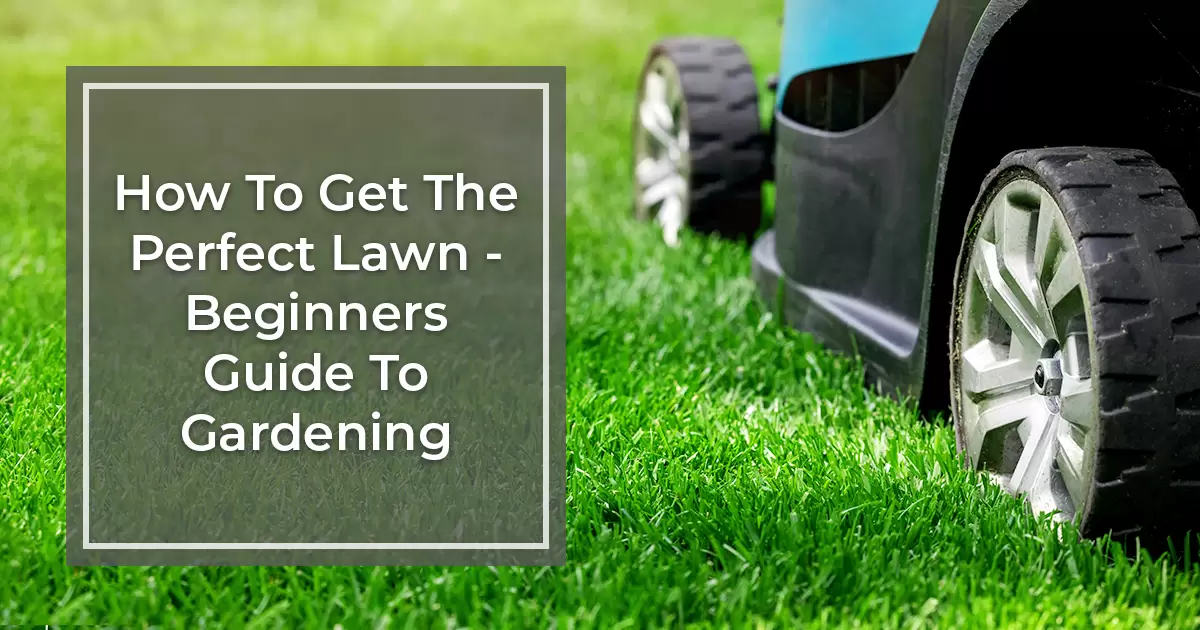
The first step in tidying up your garden is creating a neat and tidy lawn, but there’s a lot more involved than just cracking out the lawn mower.
We’ve broke it down into 3 easy steps, feel free to skip ahead at anytime if something doesn’t apply to your garden – we’ve tried to keep it as general as possible to help everybody out.
First Things First - Repair Any Patches
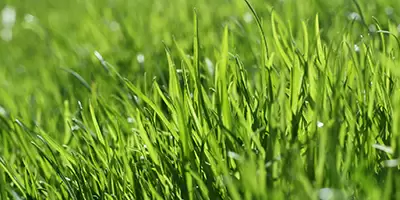
Bald spots aren’t just for the hairs on your head; garden grass can get patchy too. But just like those luscious locks, lawn patches appear when the grass is malnourished or worn out. So if it’s starting to look untidy because it’s used too much and isn’t getting enough sunlight or water - then it’s time to make a change.
Prepare the grass using a lawn rake, to remove any debris. During these autumn months try to rake the lawn before mowing, as leaves and other stuff can stop precious light and air getting to the grass, potentially causing more harm.
Before sowing any grass seeds you’ll need to scatter the patchy areas with a layer of top soil. Then you can evenly sprinkle the grass seed across the top soil, make sure not to leave any empty patches but space it out enough to give it room to grow.
Select a grass seed that’s right for your lawn:
• Lawn seed with ryegrass (best for everyday lawns) – If you want a hardwearing lawn that the kids and pets can run about on then choose a seed with ryegrass, plus they’re durable and stay green all year round.
• Blended fine grass seed (best for luxury lawns) – If you’re looking for a quality finish then a blended seed will give you that picture perfect lawn, they’re pretty high maintenance but look will awesome if you treat it right.
• Shady lawn seed (they’re not suspicious, the clues in the name) – If your lawn doesn’t get much direct sunlight then this kind of seed mix is ideal for surviving under the trampoline or in a dark spot.
Cover them with a little bit of top soil (just don’t completely block out their sunlight) and water these new seeds regularly, a watering can with a fine rose head should do the trick.
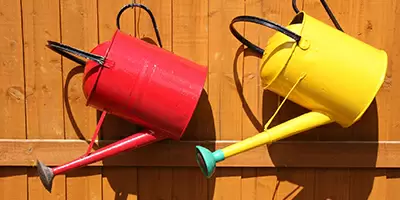
Remember to...
- Look after the seeds, keep away birds and other local animals.
- An average handful of seed should cover a 1m x 1m area.
- Apply a high phosphate food as soon as the seeds germinate.
- For the first few months don’t cut too short and use very sharp blades.
Second Of All – Remove Weeds & Moss
Attacking these annoying growths can seem like a vicious circle but our handy tips can weed out the problems and get your lawn looking lush again.
How to remove lawn moss:
Caused by water logging or drought, there are two different ways to tackle the moss on your lawn.
1. Scarify the lawn to remove the moss.
Because moss doesn’t have long roots you can use a scarifying machine to simply tease it out. To make sure you get it all, use a moss killer to wipe out any remaining moss - which will turn black when it dies, so you can easily rake it out and stop it from coming back.
2. Use a moss killer treatment
If you don’t want to scarify the lawn, then try using a moss treatment which includes a lawn feed and weed killer. Not only will it remove the weeds and moss but your lawn will look lovely too. Rake the moss when it turns black and TA DAH – your lawn is cured!

Patience is key when using moss treatments and weed killers, as some can leave your lawn looking a bit bedraggled and may take up to a month to get rid of the weed properly.
How to remove weeds:
1. Weed puller tools are great garden gadgets which do the job quickly and easily, plus you don’t have to dig about or bend down – perfect for the lazy gardener in you.
2. Selective lawn weed killers can be sprayed directly onto small areas of broadleaved weeds and won’t hurt the surrounding grass.
3. Triple action lawn treatments can be applied across the whole lawn but don’t just target broadleaved weeds oh no, most of these magical remedies kill moss and feed the lawn too!
The Final Piece Of The Puzzle - Keep It Up!
Take a deep breath the freshly cut grass smell is coming up… your lawn is almost there!
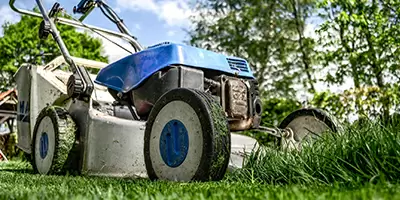
1. Bye bye yellow patches – get down on the ground and take a good old look at that grass.
If the grass blades are turning yellow in the vein areas but the rest of the leaves are green then they’re a bit poorly with an iron deficiency – spray the area with a liquid iron supplement to sort it out.
Watch how you mow! Cutting off too much grass can cause yellowy patches, try mowing on a higher blade setting so you never take off more than a third of the grass blade.
Hold back on applying fertiliser, too much can make that green go yellow. Water the area thorough to wash residual fertiliser away and into the soil.
2. Keep that lawn looking trim with regular mowing and these top tips:
Make sure the lawn is fairly dry to help get a clean cut.
In late spring/early autumn try to cut the grass little but often, letting the grass get very long before cutting can damage the plant’s ability to make itself food (*sad face*). But in winter the lawn still needs an occasional cut.
Tidy up any edges and keep the borders looking trim, a powerful grass trimmer will save you time and effort. They’re also great for cutting in places you can’t quite reach with a mower like against walls and fences or around trees.
Keep your mower serviced and those blades sharpened. Sharp blades means precision cutting, blunt blades will do a rubbish job.
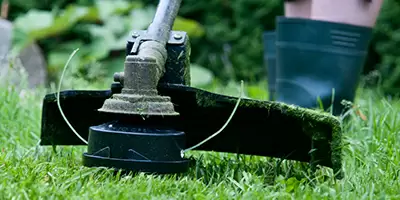
3. Aerate & scarify to keep away pesky moss
Aeration tools allow air, water and nutrients to get down into the roots of the grass. It’s best to do it in late spring/early autumn when the grass is growing the most, aerating in mid-summer and dry weather can cause the soil to dry out.
As we talked about before, scarification helps to remove moss and other dead matter than can stop water from getting to the roots. Scarifying in spring and autumn is best to prevent any major moss problems.
Don’t panic, both techniques will leave the lawn looking a bit of a mess but it will recover and look better than it ever has.
4. Fatten that lawn up with delicious fertiliser
Plants need feeding just like we do. Fertilising gives grass the nutrients it needs to grow big and strong, just remember to read instructions on the pack for recommended application rates.
Choose the right fertiliser for the season, for example: high nitrogen feed encourages the lawn to grow so try applying it during spring/summer; whereas high potassium feed strengthens roots so it should be applied in the autumn ready for winter.

5. Water & maintain that lawn
If your lawn is healthy and well-maintained it won’t need much watering. Unless it’s a brand new or luxury lawn or you live in a hot climate, just leave watering up to nature and focus on good maintenance (like scarifying and aerating) to make sure as much rain water gets to your lawn as possible.
When you do water the lawn, using a sprinkler or hose pipe, try doing it in the morning or on an evening, when the grass can absorb more water.
And there you have it – now you can take on that lawn with no problems.
Maintaining a well kept lawn is a dedicated task, but if you stay patient and use the right gardening tools you could have a beautiful green blanket that will make all the neighbours jealous.
Now you’ve got that sorted what’s stopping you from sorting out everything else. Planting a colourful flower bed or digging post holes for a fence will really make that lawn and your whole garden stand out.








